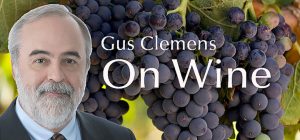“Plant a radish. Get a radish. Never any doubt. That’s why I love vegetables; you know what you’re about,” goes the opening in a song from The Fantasticks.
The song is not about wine. The resplendent joy of many wines is the liquid in the bottle likely is unique, something that cannot be duplicated.
There are exceptions, but they require large production. Big Champagne houses make to a style by blending wine from many vintages—that’s the NV (non-vintage) you see on the label. But they, too, produce bottles with vintage dates when they judge grapes from a particular year to be notably outstanding.
Mass producers of commodity wine produce to a consistent style by sourcing grapes from many vineyards. Kendall-Jackson is a master. Trade-off: you get dependable and safe, miss exceptional.
The vintage date on a wine bottle refers to year the grapes grew. Vagaries of a year reflect in the wine. Here are some vintage variables:
• Spring frost. Kills some buds, reduces yield, invites uneven ripening. It shortens the growing season, putting pressure on weather and grower to get everything right going forward.
• Spring hail. A grape farmer can lose an entire year in a couple of minutes.
• Hot year. Temperatures consistently in the 90s, especially when not balanced by cooler nights. This engenders riper fruits. That begets higher alcohol, also unripe tannins, less acidity, unbalanced wine.
• Dry year. Lack of moisture reduces yield, which often increases quality. And price.
• Rainy year. Stressed vines are divine. On the other hand, too much water increases rot and disease, reduces grape quality.
• Fall frost. Shuts down ripening, which increases volatile acidity—which presents as smell of vinegar, nail polish remover, or paint thinner. You get the ugly picture.
• Harvest rains. Rain just before harvest causes grapes to swell, producing low acidity, flabby, less concentrated berries that produce wines of no distinction.
Fortunately, especially in great grape growing regions of the world, Mother Nature can be kind and the wine of that vintage special. That is the unpredictability and the joyous sublimity of wine.
Tasting notes:
• Stags’ Leap Petite Sirah Napa Valley 2017: Politely bold expression of a grape that can be brusque. Not here. Vivid dark fruit flavors, yes. Irascible wine, no. $47 Link to my review
• Robert Mondavi The Reserve Cabernet Sauvignon, To Kalon Vineyard 2016: Polish, finesse, depth, vigorously assertive red, black fruits. $125-175 Link to my review
Last round: Spring flowers inspire me to drink wine. So does beautiful summer weather. Same with winter snow and autumn leaves. I am a wine drinker for all seasons.

